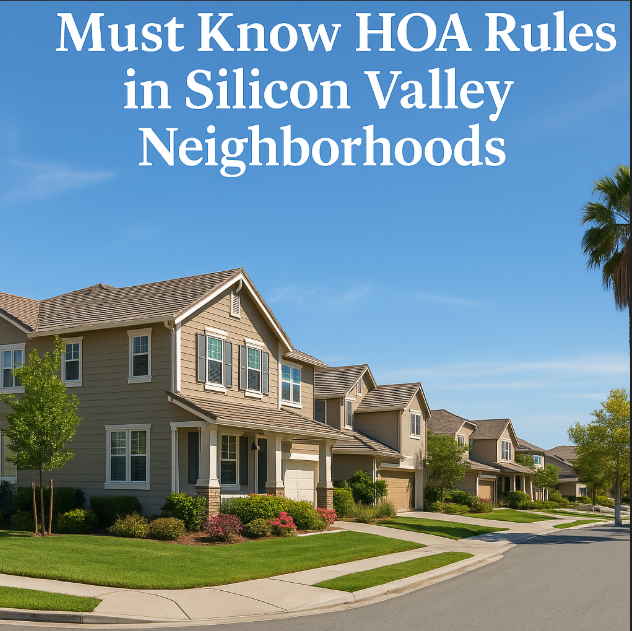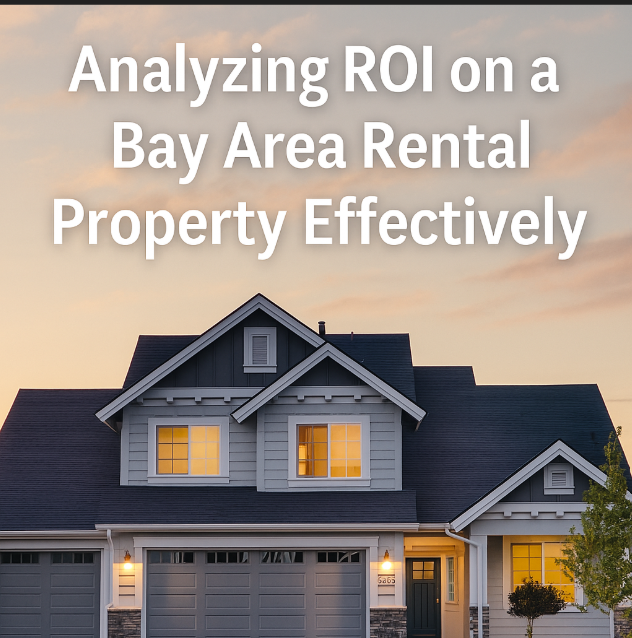If you’re planning to buy a home in Silicon Valley, there’s a good chance your dream property will come with a Homeowners Association. While HOAs are designed to preserve neighborhood appeal and ensure proper management of shared amenities, they also come with a set of rules and responsibilities that every homeowner must follow.
Whether you’re a first time buyer or relocating within Silicon Valley, understanding HOA rules is essential to avoid unexpected surprises, fines, or even legal issues.
In this guide, we’ll explore what HOAs do, the most common rules in Silicon Valley neighborhoods, and how to live in harmony with your HOA while protecting your rights.
Introduction to HOA Rules in Silicon Valley
HOAs are common in planned communities, condo complexes, and newer developments, which are prevalent across Silicon Valley cities such as San Jose, Sunnyvale, Cupertino, Palo Alto, and Santa Clara. While some homebuyers appreciate the organization and aesthetic standards HOAs bring, others may find their guidelines restrictive.
That’s why it’s crucial to know what you’re signing up for before you move in.
Understanding the Role of HOAs in Silicon Valley Neighborhoods.
What is a Homeowners Association?
A Homeowners Association is a governing body, typically formed by the developer of a residential community, that enforces rules and manages common areas within that community. When you buy a home in an HOA governed neighborhood, you automatically become a member and agree to adhere to its Covenants, Conditions, and Restrictions .
These rules are legally binding and cover everything from exterior paint colors to trash bin storage.
Importance of HOAs in Property Management
In Silicon Valley where property values are sky high HOAs play a significant role in protecting homeowners’ investments by:
- Maintaining landscaping and shared amenities.
- Enforcing uniformity and design standards.
- Managing safety features.
- Handling insurance, maintenance, and vendor contracts.
They also help preserve a community’s look, which can directly impact resale value and curb appeal.
For more on what HOAs do in California, visit :- California Association of Homeowners Associations
Common HOA Rules You Should Know
Each HOA can have different bylaws, but in Silicon Valley, some standard rules show up repeatedly:
1. Property Maintenance and Upkeep Standards
HOAs typically require regular maintenance of your home’s exterior. This includes:
- Lawn and landscape upkeep
- Exterior painting
- Roof and siding repairs
- Driveway cleanliness
Failure to comply can lead to warning notices, fines, or even liens.
2. Regulations on Modifications and Additions
Want to install solar panels or build a deck? You’ll likely need written approval from the HOA first. Commonly regulated changes include:
- Fence installation.
- Window replacements.
- Roofing material changes.
- Exterior lighting or security cameras.
- House color changes.
HOAs aim to maintain aesthetic consistency, especially in tightly planned developments.
Before starting any work, check your community’s Architectural Guidelines or reach out to the HOA board for forms and approval timelines.
3. Parking and Vehicle Rules
In many Silicon Valley communities with limited street space, HOA rules often:
- Restrict overnight street parking.
- Limit commercial vehicles or RVs.
- Prohibit non operational vehicles.
Guest passes or parking permits might be required.
4. Noise and Nuisance Policies
With homes close together, noise complaints are common. HOAs often set quiet hours and have rules against:
- Loud parties
- Barking dogs
- Unauthorized Airbnb rentals
Check your CC&Rs for short term rental policies; some HOAs prohibit them entirely.
5. Pet Restrictions
While most HOAs in Silicon Valley allow pets, there may be limits on the number, breed, or size of pets. You might also need to follow:
- Leash laws
- Waste cleanup rules
- Barking noise restrictions
Violations could result in fines or warnings.
Consequences of Violating HOA Rules
Violating your HOA rules doesn’t just earn dirty looks from neighbors it can lead to real financial and legal consequences, including:
- Warning letters or formal citations.
- Daily fines that add up quickly.
- Suspension of community privileges.
- Legal action or placing a lien on your property.
Always keep written documentation of any communication or requests to protect yourself in disputes.
Navigating Disputes with HOAs
While most homeowners follow the rules, conflicts do arise. If you feel you’ve been unfairly treated:
- Request a hearing before the board.
- Review governing documents.
- Hire legal counsel if necessary.
- File a complaint with the California Department of Real Estate if needed.
More legal info:
👉 California Department of Real Estate: HOA Guidelines
Tips for Living Harmoniously in Silicon Valley HOAs
Living in an HOA can be easy if you stay informed and involved. Here’s how:
Understand and Respect the Rules
- Read the CC&Rs (Covenants, Conditions, and Restrictions) before buying. Never sign blindly ask your realtor for a copy during escrow.
- Make note of common violation triggers, like yard maintenance, window coverings, or parking.
Engage with Your HOA Board
- Attend monthly or quarterly meetings.
- Join community committees.
- Vote on important rule changes.
- Communicate any concerns clearly and respectfully.
Getting involved helps build trust with the board and ensures your voice is heard in shaping the neighborhood’s future.
Conclusion
HOAs in Silicon Valley neighborhoods are designed to protect property values, preserve aesthetics, and create order, but they also come with rules that can impact your daily life and financial flexibility.
Before you buy:
- Review the HOA’s rules and fee structures.
- Talk to current residents about their experience.
- Factor HOA dues into your budget.
For many, HOAs offer peace of mind, organization, and amenities. For others, they may feel restrictive. The key is to understand the balance and know your rights.







Leave a Reply